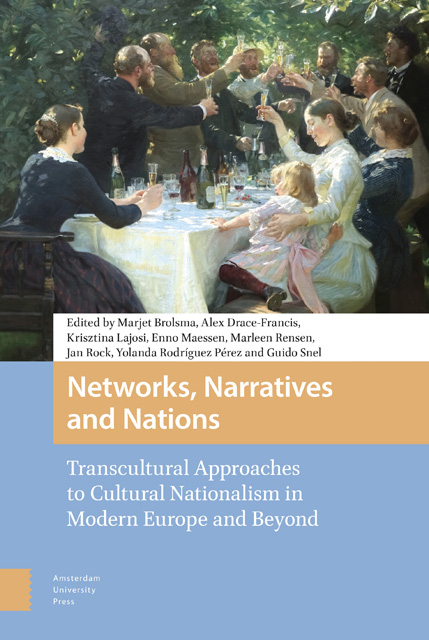 Networks, Narratives and Nations
Networks, Narratives and Nations Book contents
1 - National Stereotypes in Early Modern Europe: Some Reflections
Published online by Cambridge University Press: 16 November 2022
Summary
Abstract
This brief comparative survey of both literary and visual representations of European nations (including the Austrian Völkertafel, or Panel of the Peoples) between the sixteenth and eighteenth centuries emphasizes the importance of viewpoint, of context (war or peace, for instance), of “xenophilia” (along with the better-known xenophobia) and of both change in traditions over the centuries and their persistence over the long term.
Keywords: alterity; imagology; national character; xenophobia
Stereotypes have become a topic for research in a number of disciplines, sometimes but not always in communication with one another. They have also been claimed by sociologists, psychologists, art historians and most recently by scholars such as Joep Leerssen who study literature, under the banner of what the Germans call Imagologie, a term much easier to pronounce than its equivalent in English, “imagology.” This is the literary equivalent of what Erwin Panofsky, adapting an older usage, called “iconology” (revealing “the basic attitude of a nation, a period, a class,” and distinguished from the more descriptive “iconography.”
As a historian, I view stereotypes as central to the history of l’imaginaire sociale, a French phrase that does not lend itself to exact translation – as an approximation one might suggest “the collective imagination.” The imagination of early modern Europeans was populated by stereotypes of witches, Jews, Jesuits, Papists (for Protestants), Mahometans (for Christians), cannibals, and so on – in short, what cultural theorists (especially French ones) call the “Other.”
Within this theatre of representations, we find stereotypes of nations. The following image sets the scene, on the principle that images speak louder than words. If you are in Vienna and happen to visit the Museum für Volkskunde or folklore museum, it is likely that your attention will soon be drawn by a remarkable visual document, the Völkertafel (Panel of the Peoples, Fig. 1.1). The Völkertafel is an anonymous painting produced in Steiermark (Styria) in the first quarter of the eighteenth century. Besides the one in Vienna, there are six other versions, together with a similar engraving, so it cannot be dismissed as eccentric. The artist and the patrons of the seven paintings are unknown.
- Type
- Chapter
- Information
- Networks, Narratives and NationsTranscultural Approaches to Cultural Nationalism in Modern Europe and Beyond, pp. 31 - 40Publisher: Amsterdam University PressPrint publication year: 2022
